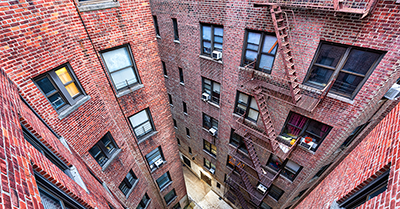
3 Common Backyard Fire Pit Laws and Regulations Homeowners Should Know
Our backyards are where we go to relax and unwind, host parties, and connect with our families. As the end of summer approaches, cooler weather begins to creep in, and we continue to look for ways to gather outside at a safe social distance, the idea of a backyard fire pit is appealing to many homeowners.
Adding a fire pit to your backyard is not only a great way to increase your yard’s chill factor but it can also increase your home’s value. Consumers responding in The National Association of REALTORS® 2018 Remodeling Impact Report: Outdoor Features gave the addition of a fire feature a perfect 10 Joy Score rating. This rating is based on the happiness homeowners reported with the addition of a specific outdoor project. The same report noted a fire feature provides an average of 67% return on investment for homeowners.
But, before you break out the Adirondack chairs and s’mores fixings, be sure to check with your city or county’s fire department and your homeowner’s associate for any restrictions you may be up against.
Most cities and towns allow small recreational fires. A recreational fire is usually defined as a campfire, bonfire, or backyard fire in a fire pit. Many recreational fire regulations are in place to remain courteous to your neighbors, but others exist to ensure your safety and the safety of those around you.
While every town is different, here are three common fire pit laws and regulations you should know about before adding a fire pit to your yard.
Whether you’re looking to add a portable fire pit or a permanent structure, you’ll need to consider the placement carefully. Portable fire pits need to be placed on fire-resistant surfaces like a brick patio or over stone pavers. Flying embers can be a fire risk if you put your portable fire pit directly onto your grass or place it on a wooden deck.
Both portable and permanent fire pits should be placed at least 10 feet away from the property line. You will also need to place or build your pit in an area free from low hanging branches and other potentially flammable landscaping elements. In fact, many areas have laws requiring 25 feet between the fire pit and your house, shed, vehicle, deck, or other combustible materials.
Your town or homeowner’s association may also require a site inspection if you plan to build a permanent fire pit. In areas prone to wildfire, your homeowner’s insurance may require you to disclose your fire pit. You should check with local fire officials before you begin your project to avoid costly mistakes.
The burning of certain materials can result in dangerous and foul-smelling gases. The article Are Backyard Fire Pits Legal? notes, “Smoke, chemicals, and poisonous gases are not only offensive; they are dangerous to those sitting near the fire, people in the vicinity, and the wildlife in the area.”
Common materials like paper, magazines, and particleboard may seem like harmless kindling but burning these materials can lead to excessive smoke and release toxins from adhesive or ink. Similarly, burning the incorrect foliage like poison ivy, oak or sumac, or even green leafy branches can lead to serious lung irritation and should be avoided.
Burning clean, dry, and split firewood is generally accepted in all counties. Woods like oak, hickory, ash, and cedar are great choices for a backyard fire pit.
Most counties and homeowners associations require that a fire be supervised by an adult the entire time it is burning. “This means even if you are 25 feet away working on a project in your garage,” the Backyard Scape article notes, “you are still violating fire safety regulations.”
Shifting winds can put your neighbor’s property and your own property in danger. You may find that local ordinances prohibit a backyard fire during high wind conditions. The general unpredictability of the weather is an important reason for regulations requiring constant supervision.
Your duty to supervise your backyard fire doesn’t end when the flames die down. Leftover embers can retain enough heat overnight that a strong gust of wind can kick the fire back up again. When you’re finished enjoying your backyard fire, you can spread out the coals and stir them with dirt or sand to ensure they are completely extinguished. Burying your hot coals will retain the heat, so instead, stir them frequently and sprinkle on soil or sand until they are no longer hot. Alternatively, you can place the embers in a metal container and douse them with water.
Adding a fire pit to your yard is an outdoor feature you can use year-round, it’s an instant party starter, and it can up the value of your home. Just be mindful of local laws and regulations before you start your fire pit project and you’ll be licking your sticky s’more fingers in no time.
Time to Focus on Affordable Housing
Taxes on real estate are not the answer. Sign the petition calling on Congress to address our country’s housing shortage.





